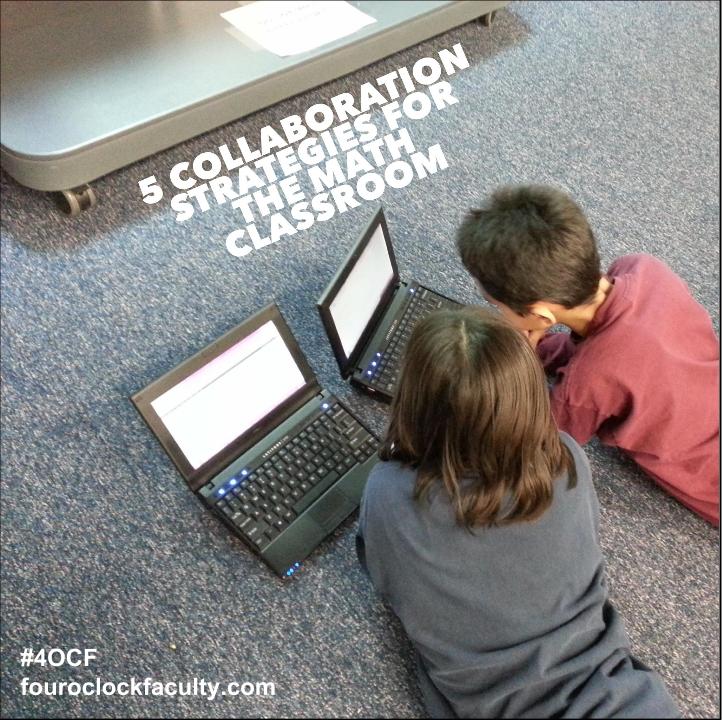Learning Lab serves as an opportunity to attain a specific strategy, lesson idea, or resource for your classroom. Everyday educators find a variety of activities that work in the classroom. #4OCF is proud to share the lessons, activities, and resources that have worked for our students. We hope that you can implement and modify these activities to meet the needs of your students.
Try these 5 Collaborative Strategies for the Math Classroom in order to improve discussion and critical thinking among students:
1. Homework Partnerships: At the beginning of class, use peer checking with students to review homework problems. Students can utilize the first five minutes of class to compare and check solutions to problems. Each student can review and explain their solution with their partner, discussing differences or similarities in solutions or thinking.
2. Math Roundtable: This can be an effective collaborative activity allowing students to practice relevant skills while also taking advantage of peer checking. Have students split into groups of 4. Give each group several pieces of blank paper and a stack of sticky notes. Have each student fold the paper into 4 boxes. Each student should write the same problem in each of the 4 boxes. Next, students can rotate through each of the problems, writing their solution in one of the boxes. After solving, students can cover their solution using a sticky note before passing on to another group member. Give students 3 minutes to solve the problem before rotating the papers to solve another problem. After four rotations, the group can remove the sticky notes and compare the solutions to the problems. Critical discussion can focus on any mistakes or differences between solutions.
3. Number Tile Activities: Utilize Marcy Cook number tiles (https://fouroclockfaculty.com/2015/02/beyond-the-worksheet/) as a team activity giving students valuable practice with critical thinking skills and perseverance. This hands-on activity gets students to think through procedural steps, build computational fluency, and develop conceptual understanding. Students can self check answers to determine correct solutions.
4. Fish Bowl: Set up desks in this model using an inner circle and an outer circle. Students in the inner circle can focus on solving a problem through a think aloud while students in the outside circle focus on the strategies that students in the inner circle are using. Infuse technology in this activity by having the students in the outer circle record their notes using Today’s Meet (www.todaysmeet.com) or a shared Google Doc. After the problem solving activity is over, have all students debrief about the strategies used to come to a solution. To stretch student thinking even more, have students switch circles and try to come up with a different solution to the problem.
5. Collaboration with Other Classrooms: Technology has made it easy to reach out to experts as well as other teachers and students in classrooms around the world. Utilize technology such as shared Google Docs, Video Conferencing and Blogs to connect with other classrooms. Set up a shared problem solving blog with other classes, allowing your students to connect with students from different cultures and backgrounds. Use Skype or a Google Hangout for discussions and solutions about real-world problems. Have students create and share their own assessments using Google Drive.
By @RACzyz





Students in the inner circle can focus on solving a problem through a think aloud while students in the outside circle focus on the strategies that students in the inner circle are using.
Can you give me an example as I don’t think I understand this one?
Thank you.
Linda
As students on the inside circle solve a word problem using different strategies, students in the outside circle focus on metacognitive strategies. For example, if a student solves a problem using a drawing, the strategy can be discussed by the outside circle. Hope this helps!
Pingback: Learning Lab: 5 Collaboration Strategies for th...